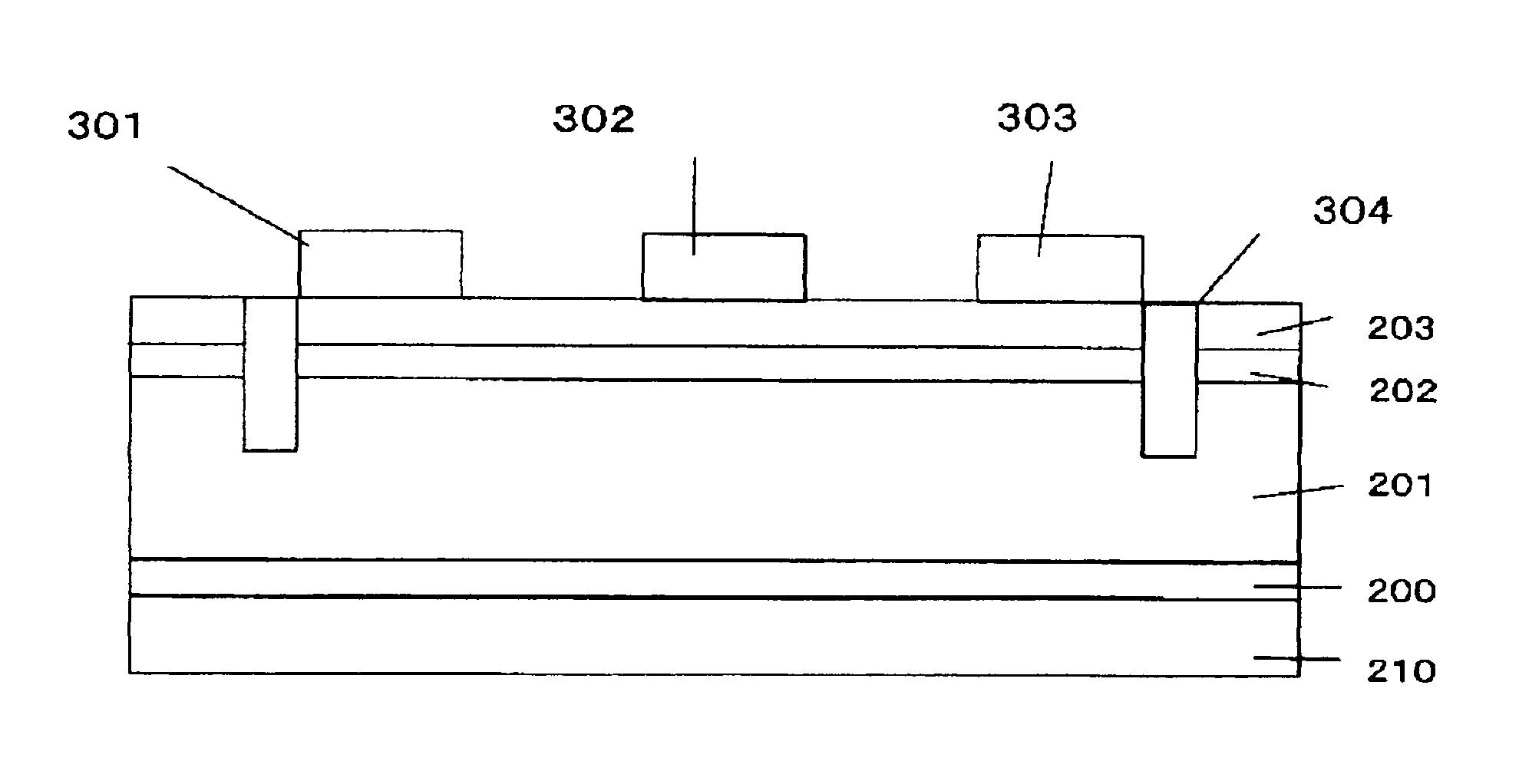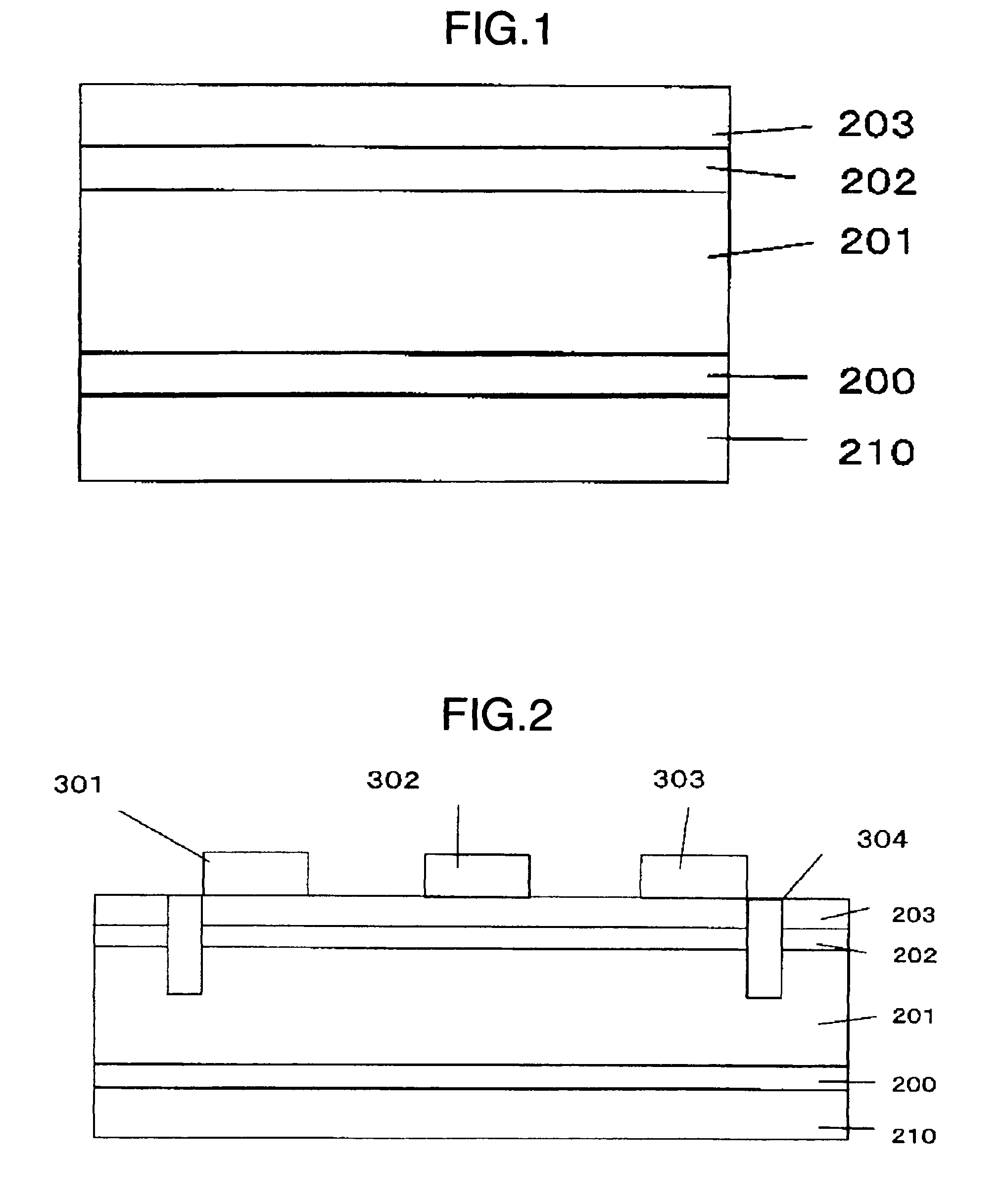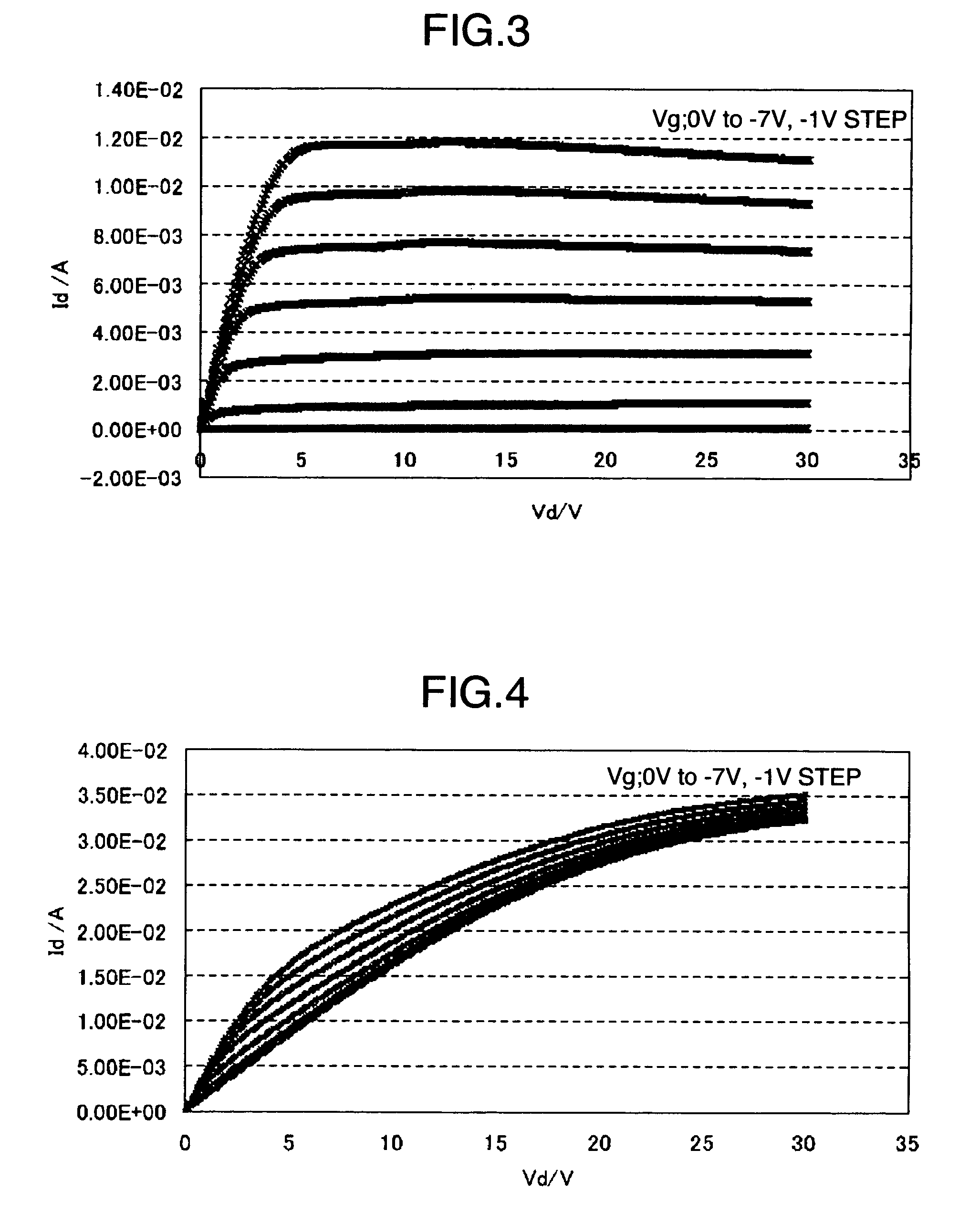Epitaxial substrate for field effect transistor
a field effect transistor and epitaxial substrate technology, which is applied in the direction of semiconductor devices, semiconductor device details, electrical apparatuses, etc., can solve the problems of gate leakage current increase and pinch-off characteristic degradation
- Summary
- Abstract
- Description
- Claims
- Application Information
AI Technical Summary
Benefits of technology
Problems solved by technology
Method used
Image
Examples
example 1
[0055]Using an MOCVD apparatus, a SiC substrate having a density of about 30 micropipes / cm2 was heated to 600° C. for growing an AlN buffer layer to a thickness of 2000 Å.
[0056]Then the temperature of the substrate was changed to (1) 950° C., (2) 1050° C. and (3) 1150° C. for stacking an GaN micropipe closing layer to a thickness of 2 μm.
[0057]Then, after the substrate temperature was allowed to fall to about a room temperature, the substrate was removed from the reactor. The substrates which had been subjected to (1), (2) and (3) were observed by using a cross-Nicol image generated by transmitted light from an optical microscope in order to identify a position of a micropipe within the substrates, and subsequently, the light was changed to epi-illumination in order to determine whether the above described micropipes were spread to the surface of the micropipe closing layer or was closed in the micropipe closing layer.
[0058]The closing rate was determined by the following equation:
(...
example 2
[0060]Using an MOCVD apparatus, a SiC substrate having a density of about 30 micropipes / cm2 was heated to 600° C. for growing an AlN buffer layer to a thickness of 2000 Å.
[0061]Then a temperature of the substrate was changed to 1150° C. for stacking a GaN micropipe closing layer to at thickness of 2 μm. And then the temperature of the substrate was changed to 1050° C. for growing an undoped-GaN channel layer to a thickness of 5000 Å.
[0062]Subsequently, undoped-AlGaN whose Al composition ratio was 0.25 was grown to a thickness of 250 Å. Then, after the substrate temperature was allowed to fall to about room temperature, the substrate was removed from the reactor.
[0063]After confirming that the micropipe within the substrate was closed with respect to the obtained sample, a resist pattern was formed so as to be in alignment such that a gate was located immediately on the closed micropipe by the use of photolithography. Subsequently, N+ ion implantation was performed to provide a devic...
PUM
 Login to View More
Login to View More Abstract
Description
Claims
Application Information
 Login to View More
Login to View More - R&D
- Intellectual Property
- Life Sciences
- Materials
- Tech Scout
- Unparalleled Data Quality
- Higher Quality Content
- 60% Fewer Hallucinations
Browse by: Latest US Patents, China's latest patents, Technical Efficacy Thesaurus, Application Domain, Technology Topic, Popular Technical Reports.
© 2025 PatSnap. All rights reserved.Legal|Privacy policy|Modern Slavery Act Transparency Statement|Sitemap|About US| Contact US: help@patsnap.com



